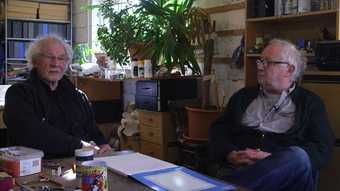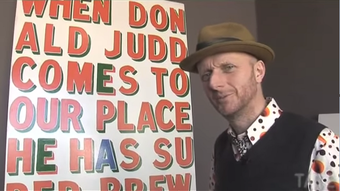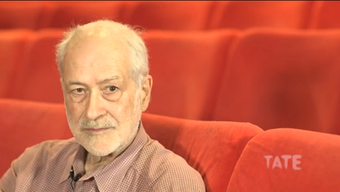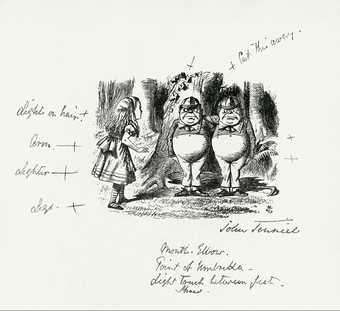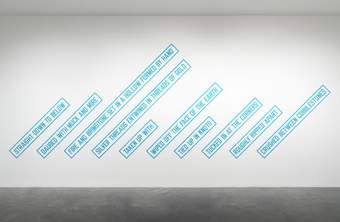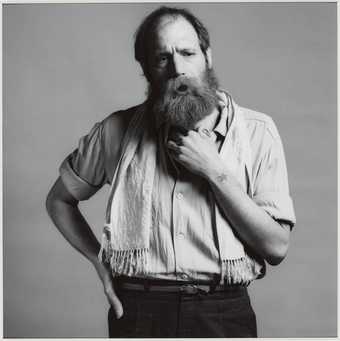A New Yorker born and raised, Lawrence Weiner’s mission in life is to get straight to the point. It’s a quality you cannot miss in his artwork, in which big ideas are communicated using the minimum of words. In 2009 he showed TateShots around his studio and allowed us a sneak preview of the projects he was working on.
I don’t like Helvetica because of its authority, and I find it a clumsy typeface. I don’t know if I find it clumsy because of its association or I just find it aesthetically clumsy, but I try to avoid it. My name is Lawrence Weiner. I was born and raised in New York City. I went to New York City public schools. I have attempted to devote the majority of my adult life to placing work within structures where they would function irregardless [sic] of what culture they found themselves in. That was a little bit of an aesthetic problem for people in the beginning, but I think in 2008 it’s not any longer questioned. I was attempting from Rome to understand the Peter and Paul problem, about how you take from one thing for another, and how you make that decision; because that will lead to my understanding how to move a piece of stone with a piece of wood, or something. I think in nouns, as a general rule – and you can’t communicate with people when you think just in nouns – so I basically have to then figure out a way to place it in a means that other people can see this as a specific object. That’s my job as an artist. That’s what I do here: that’s what you do in a studio. Occasionally I’ll draw something to understand a position. The drawings themselves are not sculpture or anything. They are dealing with things that find themselves on the table, or find themselves in the middle of the room, and how I looked at it in the moment. A parking lot is like a changing room for runway manikins. When you drive in, you have to change because you are getting out of this automobile and you are going into the city, either to shop or to do business, or to do what you’re doing. When you come back again you have to re-change your whole mentality to get back in the car and be able to drive out on the street. Art is something that’s looking for a place and banging against the walls, and that’s what you think in terms of shaking things up. It’s just looking for some place to be. Once it finds that place, it’s no longer art; it’s some sort of thing; it’s culture. An artist is never supposed to assume authority. You think it – you can think anything you damn well please, but you don’t assume it within the work. This is the Power Plant, and that’s in a show for Yvonne Lambert, about half empty, half full. This is a show I’m doing for Paris. This is the maquette of a place called [inaudible 00:02:45 ] This is all trying to understand something that intrigues me. That’s for the new art and design high school in New York with Roger Duffy, with SOM; and that’s the place, the first studio Picasso bought in the country, and it’s a piece of mine that they’ve painted onto the façade of it. I just went back to a typeface I had been working on – I never had the time to devote to it – and devoted myself to it, and it’s a very simple typeface, and it seems to be functioning for a while; and I guess one morning I’ll work up and it will have entered into the culture in such a way that I’ll try to find another typeface. Maybe, happily, there’s a need for what I do. Maybe there won’t be one day – you never know.

